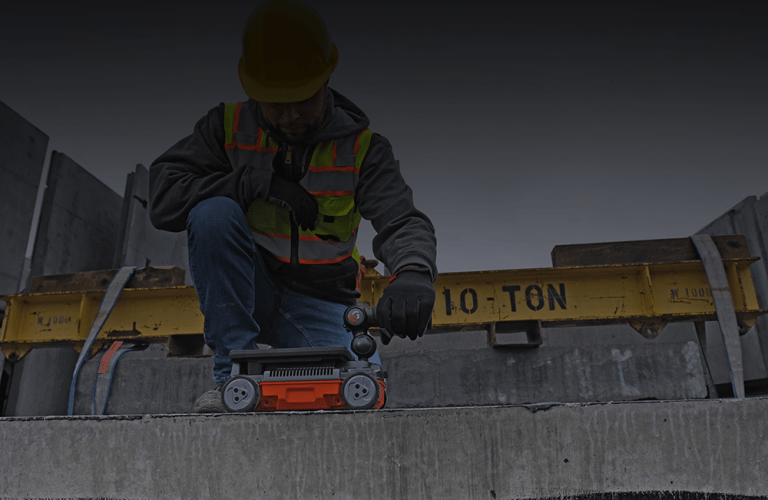RainierGPR Concrete Scanning: Ensuring Safety and Efficiency in Building and construction
RainierGPR Concrete Scanning: Ensuring Safety and Efficiency in Building and construction
Blog Article
The Relevance of Precise Concrete Scanning in Finding Underground Hazards
In the realm of construction and framework development, the significance of specific concrete scanning can not be overstated. Underneath the apparently solid ground lie complex networks of utilities, pipelines, and other subsurface frameworks that are frequently undetectable to the nude eye. The ability to accurately discover and map these underground hazards is not just a matter of convenience but a crucial element of guaranteeing the security of both building employees and the stability of the task itself. By deploying innovative scanning technologies and methodologies, experts can discover covert risks, stop pricey problems, and ultimately lead the means for smoother and much safer building ventures.
Advanced Scanning Technologies for Discovery
Innovative radar systems are reinventing the area of underground discovery by offering unrivaled precision and effectiveness. These sophisticated scanning technologies make use of ground-penetrating radar (GPR) to produce thorough pictures of subsurface frameworks, offering understandings right into what exists beneath the surface with remarkable clearness. By discharging high-frequency pulses right into the ground and determining the representations, radar systems can identify variants in product structure and spot underground risks such as spaces, cables, and pipes.
Among the essential benefits of these advanced radar systems is their non-invasive nature, allowing for detailed inspections without creating damages to the existing frameworks. This not only makes sure the safety of the surrounding atmosphere but also reduces the need for costly repair work or disturbances to ongoing building and construction projects. Furthermore, the real-time information provided by these scanning innovations makes it possible for quick decision-making and improves total project effectiveness.
Significance of Subsurface Mapping

Accurate subsurface mapping assists in preventing pricey damages to existing below ground infrastructure, minimizing the risk of crashes, and maintaining job timelines. It allows job supervisors to make educated choices relating to site preparation, tools deployment, and source appropriation. In addition, subsurface mapping permits much better sychronisation among various teams servicing a task and helps in adhering to regulatory needs associated to below ground energy discovery.
Mitigating Threats in Construction Tasks
Reliable danger reduction methods are crucial for ensuring the success and safety of building projects. One vital facet of mitigating risks in building and construction jobs is detailed preparation and analysis at the first stages.
Additionally, developing clear interaction channels amongst all project stakeholders and making certain stringent adherence to safety and security protocols are important components of risk mitigation. By proactively executing durable threat reduction methods, building tasks can minimize delays, cost overruns, and safety cases, eventually leading to successful task end results.

Protecting Against Expensive Damages and Hold-ups
To minimize economic losses and project troubles, effective approaches have to be executed to prevent pricey navigate here damages and hold-ups in building tasks. Determining these blockages early on assists in intending the job format more effectively and preventing possible damages throughout excavation.
Furthermore, investing in training programs for construction workers on the value of concrete scanning and safe excavation techniques can dramatically minimize the threat of accidents and hold-ups. Clear interaction networks in between task supervisors, designers, and pop over to these guys on-site workers are additionally important to make certain that everybody understands the potential hazards and complies with the needed protocols to prevent costly damages. By focusing on proactive measures like concrete scanning and promoting a society of safety and security and understanding, building and construction projects can lessen the financial impact of unforeseen underground obstructions and stay clear of pricey delays.
Ensuring Security of On-Site Personnel
By focusing on positive measures such as thorough training programs and clear communication networks, construction projects can guarantee the security of on-site employees amidst the prospective risks detected with concrete scanning. Correct training outfits workers with the knowledge and abilities needed to navigate building websites safely, especially when hazards are recognized with scanning procedures. Training ought to cover danger acknowledgment, emergency treatments, and the correct utilization of individual safety equipment to minimize threats effectively.
Additionally, developing clear interaction networks is crucial for distributing info concerning recognized dangers promptly. This guarantees that all on-site workers recognize possible risks and can take needed preventative measures to avoid mishaps. Regular security instructions, toolbox talks, and consistent updates regarding scanning results help keep everybody educated and positive in keeping a safe workplace.
In addition, applying strict adherence to safety protocols and guidelines, carrying out normal safety and security audits, and cultivating a culture of security awareness among workers are important parts in making sure the why not try these out wellness of on-site employees throughout building and construction tasks - RainierGPR Concrete Scanning. Aggressive security procedures not only shield workers from damage yet also add to the general success and effectiveness of the task
Conclusion
Utilizing advanced scanning innovations and subsurface mapping helps mitigate dangers in construction tasks, protecting against expensive problems and hold-ups. It is crucial for building firms to prioritize the use of accurate scanning techniques to reduce possible dangers and make sure a smooth building and construction process.

By proactively implementing robust danger mitigation approaches, building and construction jobs can reduce hold-ups, expense overruns, and security events, eventually leading to effective job results. - RainierGPR Concrete Scanning
To decrease financial losses and task obstacles, effective strategies have to be applied to protect against costly problems and hold-ups in building and construction jobs. By focusing on aggressive procedures like concrete scanning and promoting a society of security and recognition, building jobs can reduce the economic impact of unexpected underground blockages and prevent expensive delays.
By focusing on aggressive procedures such as thorough training programs and clear communication networks, building and construction tasks can guarantee the security of on-site employees amidst the possible risks spotted via concrete scanning. Making use of innovative scanning modern technologies and subsurface mapping helps reduce risks in construction jobs, stopping costly problems and delays.
Report this page